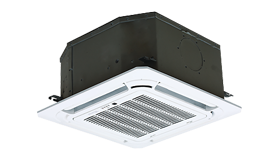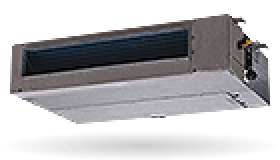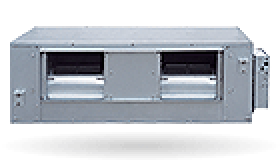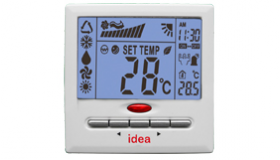Split systems consist of indoor and outdoor unit, equipped with infrared remote control, equipped with a variety of options for cleaning the air, ease of operation, the compressor can be fixed and variable (inverter) power. The indoor unit is designed for installation on the wall, on the ceiling of the room.
This type of air-conditioning was the most popular, because the compressor and condenser cooling fan (the most noisy) are in the outer, "street" block and evaporator blower located in the interior, "indoor" unit.
"Split" means "separated" - indoor and outdoor units are connected to pipes forward and reverse pumping Freon (refrigerant -teplonositelya), the pressure created by the compressor and throttle valve, which ensures the Carnot cycle in the specified temperature limits. Upon reaching the desired temperature in the room, the compressor is deactivated. In split-system inverter compressor operates at a variable speed, and this provides another "degree of freedom" for providing a more accurate temperature control.
This scheme was introduced in the 60s of the twentieth century, when the designers set out to reduce the noise level and the size of air conditioners, for wide application in daily life, previously produced only windows and industrial monoblock system, which severely limits their use in homes and offices.
Split-type AC
Cassette indoor units must be mounted on the ceiling, providing a first mounting block, and then install the decorative panel entry and exit of air. The main air distribution occurs in 4 directions, additional angular channels provide a more uniform air flow, the air flow deviation can be adjusted vertically by deflecting louvers. All cassette indoor units are equipped with built-in drain pump, decorative louvre panel and remote control are also included.
This is a split system with indoor unit that can be mounted on the ceiling or wall, so sometimes referred to as "console" or "universal". Main distribution of air occurs only in 1 direction, additional deflection of the flow in the side rails provide manually adjustable slats, the deviation of air flow can be adjusted vertically by deflecting louvers. All wall, ceiling indoor units are equipped with remote control supplied.
Indoor unit channel type allows concealed installation in suspended ceilings and air distribution channels, air ducts. These systems are often used in areas where design is important, since the block itself is not visible in the room, but only the lattice diffusers or air distribution visible to the eye. Blocks channel-type medium pressure can be connected to ducts (channels) with a length of 3.7 m. As a rule, such a solution is sufficient for a single storey cottage or a large store room with separated rooms, a small distance between them.
Indoor unit channel type allows concealed installation in suspended ceilings and air distribution channels, air ducts. These systems are often used in areas where design is important, since the block itself is not visible in the room, but only the lattice diffusers or air distribution visible to the eye. Blocks channel-type high pressure can be connected to ducts (channels) with a length of 8-14 m. As a rule, such a solution is sufficient for small-sized cottage or a large store room with separated rooms, where it is important to submit the air over long distances.
Midea air conditioners have various forms of control. By default, the control is carried out by an infrared remote control unit, which comes with air conditioning. However, various wired control panels can be connected to the indoor unit, either as usual or with a weekly timer, for example. It is also possible to control several air conditioners from one group controller.




